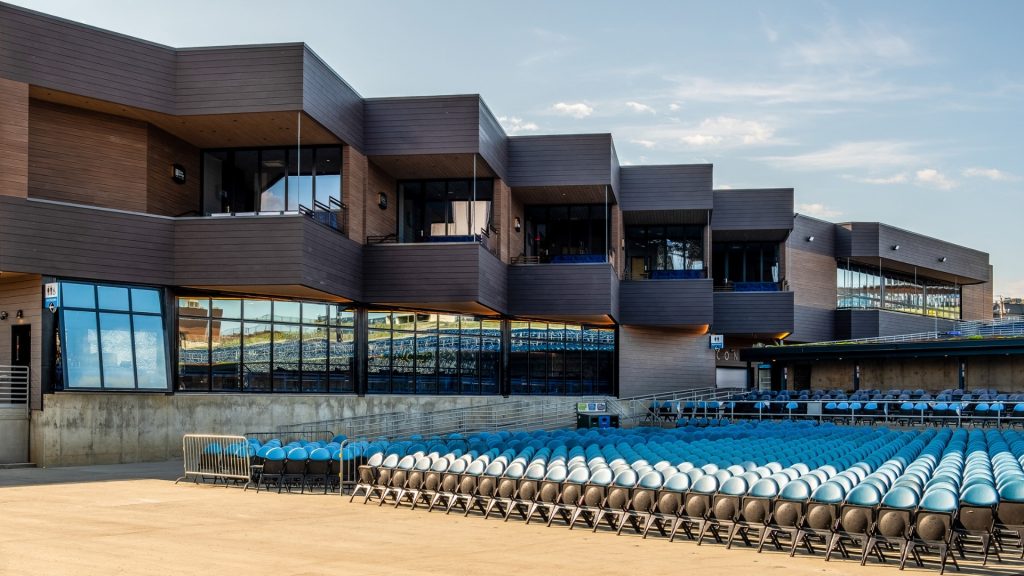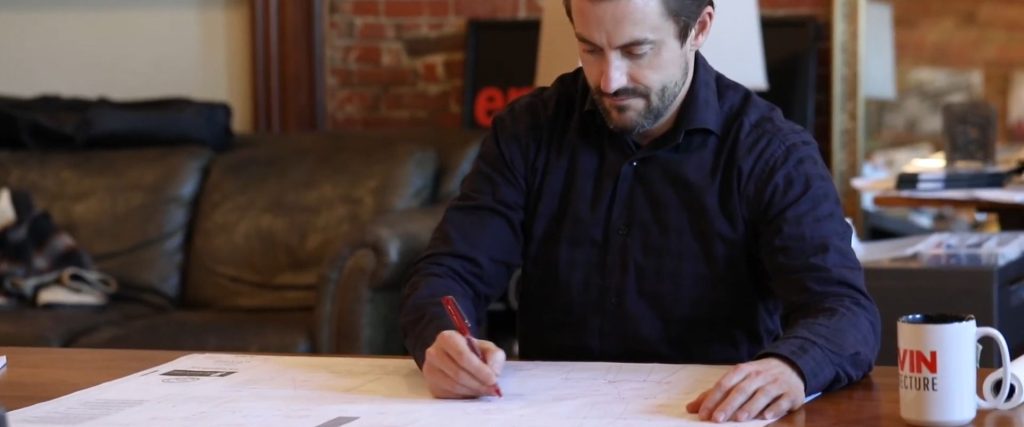
OWNER + PRINCIPAL ARCHITECT AIA, LEED AP, NCARB
Q & A With Rob
We’re always intrigued by the unique paths that lead to dream careers. Can you share the journey that brought you to your current role as an architect?
People have asked me, “If you could do it all over again, would you choose again to be an architect?” to give the question some validity I always do a quick review of what the profession has afforded me in this life and I always come back to yes. It is a fulfilling profession and one that plays to my strengths, but if I am being totally honest, filmmaking is a close second. Without the possibility of being an architect, I’d be a filmmaker no question. At one point I thought about a hybrid occupation where I would build elaborate set designs for major pictures, like whole towns etc.
It’s amusing when I look back at how my life unfolded. In hindsight, I was destined to be an architect at a very early age, I just didn’t see it. It was a bit preordained that I was to become a doctor like both my grandfather’s had been. But I loved to draw comic book characters and paint landscapes and was constantly building stuff…inventive contraptions and treehouses and clubhouses for my neighborhood friends. Over the years, I built such items as an electric car and raced it, and worked summers for h.E. Sargent construction company while enrolled in the pre-med program at bowdoin. I guess it was in the tea leaves early on but I was continually blinded by the programming to become a doctor…I just needed the right catalyst to push me into an immersive world of architecture. Through the course of school I migrated away from medicine and into the arts, and when I applied to the wrong painting program at the sacchi institute in florence (and was rejected on this clerical error) things started to build momentum. I had already sold all my belongings and moved out of my apartment and told my friends I was headed to florence. So when I was rejected, I scoured study abroad options and enrolled in syracuse university’s pre-architecture program with the idea it would get me over there and I’d take the perfunctory architecture classes and supplement as much painting as I could. And just like that I found myself in an architecture studio in florence in the spring of 2000. It was the perfect blend of creative design and resurrected my love of construction. I loved it so much that the following summer I enrolled in summer architecture classes at harvard’s gsd. And just like that, I had started a career trajectory in architecture.
Your diverse travels are evident in your designs. Could you share which destination has had the most profound impact on your career in design, and why?
One thing I learned much later in life is the ability of the mind to record. We have a vast database of life experiences that are stored in the annals of our subconscious. Even though our experiences might not be in the forefront of our conscious mind, they are still there. And they influence everyone’s design thinking. My architecture has been compared to louis kahn, and as a third generation louis kahn student, it might make a little bit of sense. However, I think my greatest inspirations have come from a mix of influences from my travels to india, italy, egypt, and greece. At the end of the day I try to just design. I resist preconception and look for flow. And every so often I’ll be working on something and I’ll recognize a condition from my travels that I didn’t know I even remembered. It’s as if the design process is a way to retrieve information from your subconscious-mind. In this design process, it is as if you are using more of your brain and can access these memories from travel.
In your opinion, what are the key elements that distinguish exceptional designs, and how do you prioritize them in your creative process?
I always look to design with bold and impactful in mind. And where I can, majestic, gestural, and dynamic. It’s too easy to build static, boring buildings. Humanity has been doing that for many centuries. It’s our duty as designers to create architecture that engages and uplifts but also energizes. And so I would say that creating movement is the most enjoyable design endeavor to date for me, personally.
You listen to a diverse mix of both soothing and energetic music. Does music play a role in your design process?
When I’m driving definitely the talking heads or when I’m feeling rambunctious jack white or if I’m looking to really unload some energy maybe ozzy osbourne, but on the contrary the majority of my listening focuses around classical music. It gets my synapses firing while soothing my heart. As my grandmother once said “there’s mozart and then there is everyone else. And I would have to agree. I listen to a lot of classical music in the office and at home.
Outside of the office, where can we usually find you, and what brings you happiness and fulfillment beyond your architectural endeavors?
I used to ski, fish, go back country hiking and camping, practice bikram yoga, and was constantly pushing myself at the gym. As of late it’s been all work but I’m looking to reconnect with these activities that defined so many years of my life. I am also constantly looking for ways to enhance my mental fortitude and maintain a connection to my muse. I’ve been doing that through diet and meditation as of late.
For our fellow architects who aspire to work on projects they’re truly passionate about and gain recognition, what advice would you offer?
Never ever follow the money if you want to grow your company and get amazing design opportunities. Focus on the opportunity, not the revenue. Focus on building the best portfolio you can build in the shortest amount of time as possible. And never treat a client as a line item to pay a staff member’s health insurance. The revenue will follow if you lead with your appetite for design. You’ll soon be doing incredible things and the ability to run the company the right way, with the right jobs, will be crystallized forever. I see plenty of architecture firms out there bringing in work to pay the bills rather than afford the entire office the opportunity to work on great things. It is a source of pride for me personally to say to a 25 year old, you are going to be working on a music venue for 17,000 people.
Education
Rensselaer Polytechnic Institute
Masters of Architecture
Whitman College
B.A, Visual Culture
Harvard University Graduate School of Design
Career Discovery Program, Architecture
Syracuse University
Architecture Abroad – Florence, Italy
Bowdoin College
B.A., Pre-med


